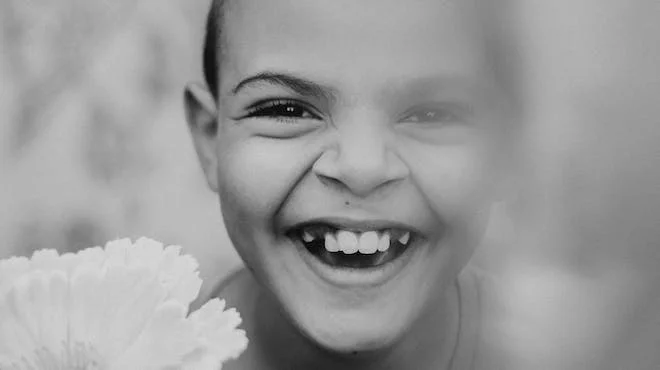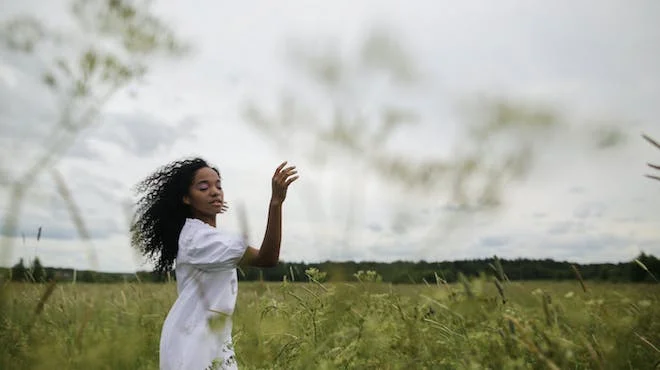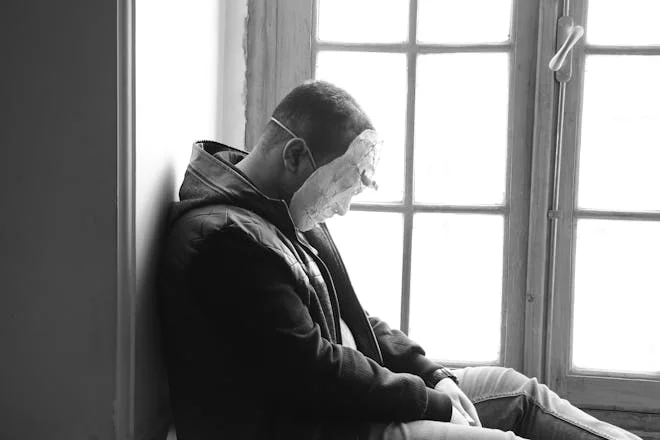Dream Variations by Langston Hughe- an Analysis
February 14, 2024 | by poemread.com

Hello readers! Welcome to another poetic exploration. Today, we are going to analyze the beautiful masterpiece, “Dream Variations” by Langston Hughes. Set against the backdrop of racial oppression, the poem celebrates the power of imagination and the longing for liberation. Owing to its evocative language and universal themes, “Dream Variations” remains a timeless masterpiece that continues to resonate with readers today.
Dream Variations
by Langston Hughe
To fling my arms wide
In some place of the sun,
To whirl and to dance
Till the white day is done.
Then rest at cool evening
Beneath a tall tree
While night comes on gently,
Dark like me—
That is my dream!
To fling my arms wide
In the face of the sun,
Dance! Whirl! Whirl!
Till the quick day is done.
Rest at pale evening . . .
A tall, slim tree . . .
Night coming tenderly
Black like me.
Content
Context of the poem
The context of the poem is deeply rooted in the social and cultural landscape of early 20th-century America, particularly within the context of the Harlem Renaissance. It was a cultural movement that celebrated African American art, music, and literature. Also, it was a period marked by racial segregation, economic inequality, and widespread discrimination against African Americans.
During this time, the Harlem Renaissance emerged as a beacon of hope and empowerment for African American artists and intellectuals. The movement was centered in the Harlem neighborhood of New York City. Similarly, it provided a platform for African American voices to express themselves creatively and assert their cultural identity.
“Dream Variations” reflects Hughes’ engagement with the Harlem Renaissance, as well as his broader commitment to social justice and equality. The poem captures the longing for freedom and the experiences of many African Americans during this time.
Moreover, “Dream Variations” can be seen as a powerful response to the racial stereotypes that looked down upon the African Americans. In sum, the context of “Dream Variations” is deeply intertwined with the historical and cultural currents of the Harlem Renaissance. Through his poetry, Hughes not only captures the spirit of the era, but also contributes to its ongoing legacy.
Line-by-Line Analysis of “Dream Variations”
Line 1 “To fling my arms wide”
In the opening line of “Dream Variations,” Langston Hughes utilizes the technique of imagery to evoke a sense of freedom. The act of flinging “arms wide” symbolizes a longing to break free from social constraints and a sense of liberation.
Furthermore, this metaphorical image evokes a feeling of openness. It invites the reader to join a world where the narrator can fully express themselves without fear or hesitation. Overall, this line serves as a powerful introduction, setting the tone for the themes of freedom, resilience, and the human spirit.
Line 2 “In some place of the sun”
Here, Hughes utilizes imagery and symbolism to evoke a feeling of warmth and illumination. The word “sun” implies brightness and radiance, suggesting a metaphorical journey towards enlightenment and self-discovery. By using the sun as a symbol of hope and vitality, Hughes dresses the line with optimism and possibility. Moreover, it hints at a world where dreams flourish under the bright light of day.
The phrase “some place” refers to a vague or unspecified location. In this context, it suggests a dreamlike or idealized setting. The use of the word “some” implies that the exact location is not important; rather, it is the feeling of being in a place filled with sunlight and positivity that matters.
Line 3 “To whirl and to dance”
This line evokes a sense of movement and joy. Here, the verbs “whirl” and “dance” suggest a lively and energetic activity, symbolizing the freedom that the persona longs for. In addition, the word “whirl” conjures images of spinning and twirling, while “dance” evokes the rhythmic motion of moving to music. Together, these verbs create a vivid picture of the joy of movement, uninhibited by the conflicts of everyday life.
Additionally, the repetition in the phrase “To whirl and to dance” adds emphasis and rhythm to the line. This rhythmic repetition adds emphasis to the joyous act of dancing, underscoring its significance as a symbol of liberation and self-expression.

Line 4 “Till the white day is done”
Here, Hughes employs the technique of symbolism, using the phrase “white day” to represent the passage of time and the inevitability of change. The use of the color white conveys a sense of purity and clarity, suggesting a journey towards enlightenment and understanding.
However, the use of the word “till” implies that this period of brightness is temporary, suggesting that the day will eventually come to an end. It is ironical how the poet has juxtaposed the image of dancing with the notion of the day coming to an end. Therefore, this phrase is highlighting the transient nature of freedom and the need to seize the moment before it fades away.
Additionally, the repetition of the “d” sound in “white day is done” creates a sense of finality and closure, underscoring the inevitability of the day’s end. Overall, this line captures the dual themes of optimism and impermanence, inviting the reader to contemplate the cyclical nature of life and the need to embrace each moment fully.
It is possible to interpret “white day” as a metaphor for a period characterized by racism or racial oppression, where the “white people” rule. Nevertheless, it’s important to note that Langston Hughes likely intended a different meaning in this context. However, interpretations of poetry can vary, and readers may find personal connections or alternative meanings in the text.
Line 5 “Then rest at cool evening”
In this line, Hughes again employs the technique of imagery to evoke a sense of tranquility and peace. The phrase “cool evening” brings about images of serenity and calm, suggesting a moment of quiet reflection after the excitement of dancing. By juxtaposing the imagery of warmth and brightness of sun with the notion of coolness and darkness, Hughes creates a sense of balance and harmony, underscoring the cyclical nature of the human experience.
Line 6 “Beneath a tall tree”
The image of a tall tree conveys a sense of strength, stability, and rootedness, serving as a metaphor for resilience and endurance. By positioning the persona beneath the tree, Hughes creates a visual image of refuge, suggesting a place of safety and comfort where the persona can find solace and rest. Overall, this connection of human and natural elements adds depth to the poem, inviting readers to contemplate the interconnectedness of all living beings.
Line 7 “While night comes on gently”
In this final line, Hughes employs the technique of personification to personify the night as it “comes on gently.” In addition, the use of the adverb “gently” infers peace and tranquility. This suggests that the onset of night is not abrupt or harsh, but rather unfolds slowly and peacefully.
That said, readers may draw connections between the imagery of nightfall and broader societal issues, including racial tensions or conflicts. The gentle onset of night could symbolize a moment of calmness or respite amidst turbulent times. Therefore, while the “white day is done”, this could represent the freedom of the African Americans, and can be attributed to the day they “rest” calm and peacefully.
Line 8 “Dark like me—”
In this line, Hughes introduces a powerful metaphor by comparing the darkness of the night to the persona’s own skin color with the phrase “Dark like me.” Comparing the darkness of the night to their own skin color, suggests a connection between their identity as a Black individual and the natural world. Further, it highlights the beauty and complexity of darkness.
Therefore, this draws attention to the poem’s central theme of racial discrimination and social prejudice. In addition, use of the dash at the end of the line creates a pause, allowing the reader to reflect on the implications of this comparison and the deeper meanings it conveys.
Line 9 “That is my dream!”
The stanza concludes with a resounding declaration of the persona’s dream, reinforcing the central theme of longing for freedom and liberation. Further, Hughes employs exclamation marks to emphasize the intensity of the persona’s desire.

Stanza 2
Line 1-3 “To fling my arms wide/ In the face of the sun,/ Dance! Whirl! Whirl!”
The repetition of the opening line further establishes the desire for freedom and liberation. The reiteration of “To fling my arms wide” serves as a refrain, anchoring the poem and highlighting the persona’s unwavering commitment to this dream.
Likewise, the phrase “In the face of the sun,” brings about the image of facing the sun directly. This symbolizes the persona’s courage and determination to confront adversity head-on, refusing to be held back by obstacles or limitations. In addition, facing the sun directly also implies looking at the light or liberation with unwavering determination.
Moreover, the repetition of “Whirl! Whirl!” emphasizes the exhilarating act of dancing, underscoring its significance as a symbol of joy and liberation. This rhythmic repetition adds to the poem’s sense of energy and vitality, propelling the reader forward on a journey of self-discovery and empowerment.
Line 4 “Till the quick day is done.”
Dancing till the “quick day” is gone suggests the fleeting nature of time, specially while having a good time. Thus, Hughes implies a sense of urgency of pursuing one’s dreams. This dual meaning enriches the poem’s themes of transience and urgency.
Furthermore, the preceding line, “Dance! Whirl! Whirl!” adds to this urgency in this momentum, while adding a rhymical image of a dance progressively increasing in its tempo.
Line 5-6 “Rest at pale evening . . ./ A tall, slim tree . . .”
Here, the poem again returns to the theme of rest and reflection, contrasting the vibrant energy of dancing with the calm and “pale” evening hours. The imagery of the tall, slim tree pops up again, however, with a different tone.
Moreover, there is a subtle shift of the tone and the use of punctuation, which is significant and interesting. In the earlier stanzas of the poem, the language is vibrant and energetic. However, as the poem progresses towards the end, the tone becomes more tranquil and introspective.
Nevertheless, this shift adds depth to the poem, capturing the full spectrum of emotions and experiences as the persona navigates their dreams and aspirations. Furthermore, it can also imply the ups and downs of the emotional state during a long fight towards liberation. Nevertheless, the tone of the poem remains hopeful and optimistic throughout, despite the subtle change in mood.
Line 7 “Night coming tenderly”
Hughes concludes the poem with a gentle affirmation of the night’s arrival, using the adverb “tenderly” to convey a sense of care and compassion. The personification of the night as it “comes tenderly” adds a touch of intimacy to the poem. Finally, it leaves readers with a sense of peace of the evening and the promise of rest.
What could have influenced to write this poem?
Several factors may have influenced Langston Hughes to write “Dream Variations.” Firstly, Hughes was deeply influenced by the racial injustices and social inequalities prevalent in America during his lifetime. Growing up in an era marked by segregation and discrimination, Hughes keenly observed the struggles faced by African Americans and sought to give voice to their experiences through his poetry.
Additionally, Hughes was a central figure of the Harlem Renaissance—a cultural movement that celebrated African American art, music, and literature in the 1920s. This inspired Hughes to explore themes of identity, freedom, and resilience in his work.
Furthermore, Hughes’ own personal experiences and struggles may have informed his writing of “Dream Variations.” As a black man navigating a racially divided society, Hughes struggled with issues of belonging and self-expression, which are echoed in the themes of the poem.
Moreover, Hughes’ interest in music and jazz poetry may have influenced the rhythmic and lyrical qualities of “Dream Variations.”
Songs and music inspired by the poem “Dream Variations” by Langston Hughes
Lastly, Langston Hughes’ poem “Dream Variations” has inspired various adaptations, including musical compositions and theatrical performances. Additionally, numerous jazz musicians and singers have drawn inspiration from Hughes’ poetry.
Furthermore, musicians and composers have drawn inspiration from Hughes’ poetry, incorporating themes and imagery from “Dream Variations” into their own compositions. For example, artists like Nina Simone, Duke Ellington, and Billie Holiday have all referenced Hughes’ work in their songs, capturing the essence of his poetry through their own musical interpretations.
Follow these links to check out some of the music inspired by the poem. https://www.youtube.com/watch?v=OjX6xTKQA0s
Q and A
Who is the narrator of the poem or the persona?
In “Dream Variations,” the persona or narrator remains implicit, representing the collective voice of African Americans striving for emancipation. The poem employs a third-person narrative perspective, allowing Hughes to explore the universal themes if the poem.
What are the themes and recurring ideas in the poem?
There are several interconnected themes and recurring ideas that resonate throughout the poem.
Freedom and Liberation: Central to “Dream Variations” is the theme of freedom and liberation. Through vivid imagery of dancing and rejoicing beneath the moonlit sky, Hughes hints on a world where all are free to pursue their aspirations.
Identity and Self-Expression: Hughes explores the theme of identity and self-expression, particularly within the context of the African American experience. The persona’s ability to “waltz” and “laugh” without fear reflects the resilience of a marginalized community.
Resilience and Hope: Despite the challenges of racial discrimination, “Dream Variations” exudes a sense of resilience and hope. The poem’s imagery of swaying trees and “night coming tenderly” suggests a quiet optimism in the face of adversity, reminding readers of the enduring strength of the human spirit.
Dreams and Imagination: At its core, “Dream Variations” celebrates the transformative power of dreams and imagination. It inspires readers to dare to dream and envision a brighter future.
What is the tone and the mood of the poem?
The tone of Langston Hughes’ “Dream Variations” is one of longing, and optimism, while the mood is vibrant and hopeful. Throughout the poem, language is dynamic and energetic, filled with vivid imagery and rhythmic repetition that evoke a feeling of exhilaration and freedom.
At the same time, there is an underlying sense of longing and yearning in the poem, as the tone becomes more contemplative towards the end.
What is the Form and Structure of the poem?
“Dream Variations” by Langston Hughes exhibits a free verse form, characterized by its lack of strict rhyme scheme and meter. This liberated structure allows Hughes to experiment with language and imagery, conveying the themes and emotions of the poem in a dynamic manner.
The poem consists of two stanzas, each varying in length and structure. The first stanza is longer, comprising seven lines, while the second stanza is shorter, consisting of only four lines. This asymmetrical structure creates a sense of movement within the poem, mirroring the nature of the human experience.
Pauses and line breaks
Hughes employs pauses and line breaks strategically throughout the poem to create emphasis and rhythm. In terms of punctuation, Hughes uses minimal punctuation in “Dream Variations,” opting instead for a more fluid and uninterrupted flow of language.
Rhyme scheme
While “Dream Variations” does not adhere to a strict rhyme scheme, Hughes incorporates subtle internal rhymes and alliteration throughout the poem to create a sense of musicality and harmony. For example, the repetition of the “d” sound in “dancing” and “dreams” in the first stanza adds a lyrical quality to the verse.
Use of punctuation
Hughes uses punctuation sparingly throughout the poem, relying primarily on commas and dashes to guide the reader through the text. The commas are strategically placed to create pauses and breaks in the lines, allowing the reader to pause and reflect on the imagery and ideas presented. Additionally, Hughes uses dashes to signify interruptions or shifts in thought within the poem.
What are the poetic techniques used in the poem?
Imagery
Hughes uses vivid imagery to evoke sensory experiences and create vivid mental pictures for the reader. For example, the image of “fling my arms wide” infers a sense of freedom and expansiveness, while “night coming tenderly” paints a picture of tranquility and serenity.
Personification
Hughes personifies elements of nature, such as the night and tall tree, imbuing them with human qualities and emotions. This personification adds depth to the poem and allows the reader to connect with the natural world on a more intimate level.
Alliteration
Hughes employs alliteration, or the repetition of consonant sounds, to create rhythm and musicality in the poem. This enhances the poem’s lyrical quality.
Symbolism
Throughout the poem, Hughes uses symbolism to convey deeper meanings and themes. For example, the sun symbolizes hope and vitality, while the night represents the passage of time and the inevitability of change.
Repetition
Hughes employs repetition, or the use of the same words or phrases multiple times, to create emphasis and reinforce key themes. The repetition of the phrase “To fling my arms wide” at the beginning of each stanza serves as a refrain, anchoring the poem and highlighting the persona’s longing for freedom.
Enjambment
Hughes utilizes enjambment, or the continuation of a sentence or phrase from one line to the next without punctuation, to create a sense of flow and continuity in the poem. This technique adds to the poem’s rhythmic quality and enhances its overall musicality.
More about the author, Langston Hughes
Langston Hughes, a towering figure in American literature, was born in 1902 in Joplin, Missouri. As a prominent voice of the Harlem Renaissance—a cultural movement celebrating African American art and literature in the 1920s—Hughes played a pivotal role in shaping the literary landscape of the time.
In addition, Hughes’s work is known for its powerful exploration of African American identity, culture, and experience. His poetry, prose, and essays often addressed issues of race, class, and social justice, reflecting the struggles and aspirations of Black Americans during a time of widespread racial discrimination and segregation in the United States.
Hughes’ writing style was characterized by its simplicity, accessibility, and authenticity. He drew inspiration from the rhythms and language of everyday life, infusing his work with a distinctive blend of colloquialism, blues, and jazz. His poems often featured recurring themes such as dreams, resilience, and the human spirit, capturing the beauty and complexity of African American life with empathy and compassion.
Throughout his prolific career, Hughes authored numerous poetry collections, including “The Weary Blues,” “Montage of a Dream Deferred,” and “The Dream Keeper and Other Poems.” He also wrote plays, short stories, and essays, becoming one of the most versatile and prolific writers of his generation.
Beyond his literary achievements, Hughes was a prominent social activist and advocate for civil rights. His work remains a testament to the power of art to illuminate the human experience and ignite social change.
Explore more poems celebrating culture and identity on our website at Religion and Culture – PoemRead
RELATED POSTS
View all



